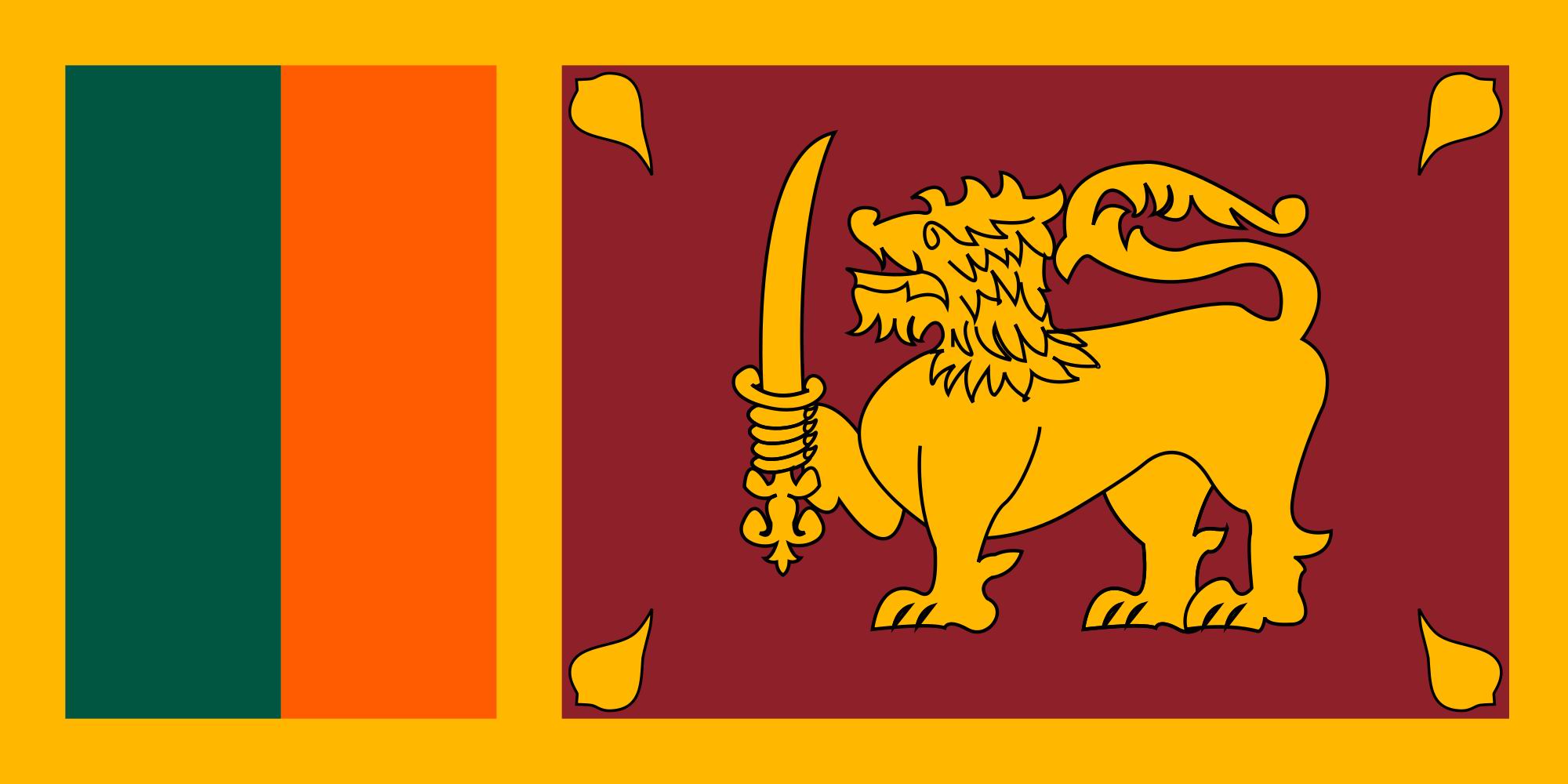Sri Lanka at a Glance
Sri Lanka Fact File

Set in the Indian Ocean in South Asia, the tropical island nation of Sri Lanka has a history dating back to the birth of time. It is a place where the original soul of Buddhism still flourishes and where nature’s beauty remains abundant and unspoilt.
Few places in the world can offer the traveller such a remarkable combination of stunning landscapes, pristine beaches, captivating cultural heritage and unique experiences within such a compact location. Within a mere area of 65,610 kilometres lie 8 UNESCO World Heritage Sites, 1,330 kilometres of coastline - much of it pristine beach - 15 national parks showcasing an abundance of wildlife, nearly 500,000 acres of lush tea estates, 250 acres of botanical gardens, 350 waterfalls, 25,000 water bodies, to a culture that extends back to over 2,500 years.
|
Official Name: |
Democratic Socialist Republic of Sri Lanka |
|
Government Type: |
Republic |
|
Location : |
Latitude 5° 55. to 9° 50. north, Longitude 79° 42. to 81° 52., 650km north of the equator |
|
Dimensions : |
430km North to South, 225km East to West |
|
Coastline : |
1,340km |
|
Area : |
65,525km |
|
Currency (code): |
Sri Lankan Rupee (LKR) |
|
Independence: |
4 February 1948 |
|
Administrative Capital : |
Sri Jayewardenepura |
|
Commercial Capital : |
Colombo |
|
Administrative Divisions: |
Typically tropical, with anortheast monsoon (December to March) bringing unsettled weather to the north and east, and a southwest monsoon (June to October) bringing bad weather to the south and west |
|
Terrain: |
Mostly low, flat to rolling plain; mountains in south-central interior |
|
Highest Mountain : |
Pidurutalagala, 2,524m |
|
Highest Waterfall : National Anthem: |
Bambarakanda, 263m "Sri Lanka Matha" composed by late Mr. Ananda Samarakoon. |
|
National Flower: National Tree: National Bird: |
The Blue Water Lily (Nymphaea stellata). The Ironwood (Na Tree), botanically known as ”Mesua Nagassarium” Sri Lanka Jungle Fowl – Very colourful ground bird |
|
National Parks and Nature Reserves Area : |
8,000sq.km |
|
Population: |
21,128,773 |
|
Pop. Growth Rate: |
1.3% |
|
Population Density: |
309 people per sq km |
|
Life Expectancy at Birth |
74 female, 64 male |
|
Literacy Rate : |
Female 87.9 Male 92.5 |
|
Ethnic Groups: |
Sinhalese, 74%; Tamil, 18%; Muslim 7%; Burgher (descendants of Dutch and Portuguese colonist) and others 1% |
|
Languages: |
Sinhala (official and national language) 74%, Tamil (national language) 18%, other 8% |
|
Religion: |
Buddhism 70%; Hinduism 16%; Christianity 7%; Islam 7% |
|
Time Zone : |
Sri Lanka Standard Time isfive and a half hours ahead of GMT. (Allowance should be made for summer-time changes in Europe.) |
|
International Dialing : |
+94 |
|
Electricity : |
230. 240 volts, 50 cycles AC. If you travel with a laptop computer bring a stabilizer |
|
Economy: |
Sri Lanka's most dynamic sectors are food processing, textiles and apparel, food and beverages, port construction, telecommunications, insurance and banking. In 2006, plantation crops made up only 15% of exports (90% in 1970), while textiles and garments accounted for more than 60%. About 800,000 Sri Lankans work abroad, 90% of them in the Middle East. They send home more than US$1 billion a year. |
|
Labour Force |
34.3% of the labour population is employed in agriculture, 25.3% in industry and 40.4% in services: 40.4% (30 June 2006 est.) The unemployment rate is 5.7% (2007 est.) |
|
Agriculture & Products |
Rice, Sugarcane, Grains, Pulses, Oilseed, Spices, Tea, Rubber, Coconuts, milk, Eggs, Hides, Beef, Fish |
|
Industries: |
Processing of rubber, tea, coconuts, tobacco and other agricultural commodities, telecommunications, insurance, banking; clothing, textiles, cement, petroleum refining. |
|
Exports: |
Textiles and apparel; tea and spices; diamonds, emeralds, rubies; coconut products, rubber manufactures, fish |
|
Imports: |
Main import commodities are textile fabrics, mineral products, petroleum, foodstuffs, machinery and transportation equipment: $10.61 billion f.o.b. (2007 est.). Percentage of main commodities from main import partners: India 19.6%, China 10.5%, Singapore 8.8%, Iran 5.7%, Malaysia 5.1%, Hong Kong 4.2%, Japan 4.1% (2006) |
|
Gross Domestic Product (GDP): |
Purchasing power parity: $81.29 billion (2007 est.). Official exchange rate: $30.01 billion (2007 est.) Real growth rate: 6.3% (2007 est.) Per capita: $4,100 (2007 est.) composition by sector: Agriculture: 16.5% Industry: 26.9% |
|
Gross National Product (GNP): |
Sri Lanka is placed in 76th place in GNP figures of the world’s nationswith $22.8billion (2005) |
(Courtesy:www.gov.lk /Sri Lanka Tourism)
Flag description:

The National Flag of Sri Lanka represents the country and her heritage as rallying device that integrates the minorities with the majority race.
Sri Lanka National Flag is an improvisation of the civil standard of the last king of Sri Lanka, Sri Wickrama Rajasingha.
The civil standard had a passant royal lion with a sword in its right fore paw at the center, and a bo-leaf on each of the four corners on a plain border.
When Sri Lanka gained her independence from Great Britain on February 04, 1948, it was the lion flag of the last king of Sri Lanka was hoisted once again.
(Courtesy: www.gov.lk )